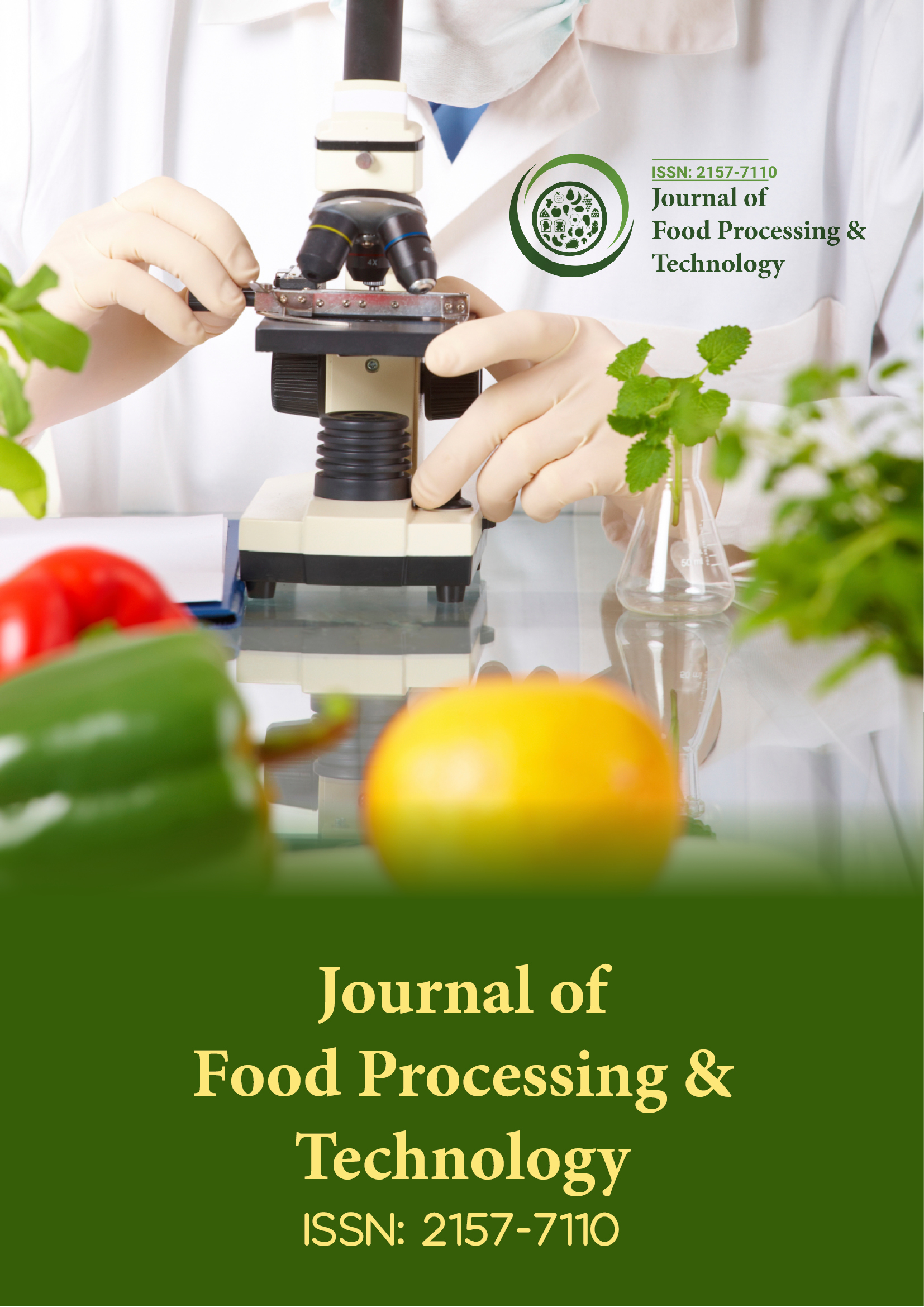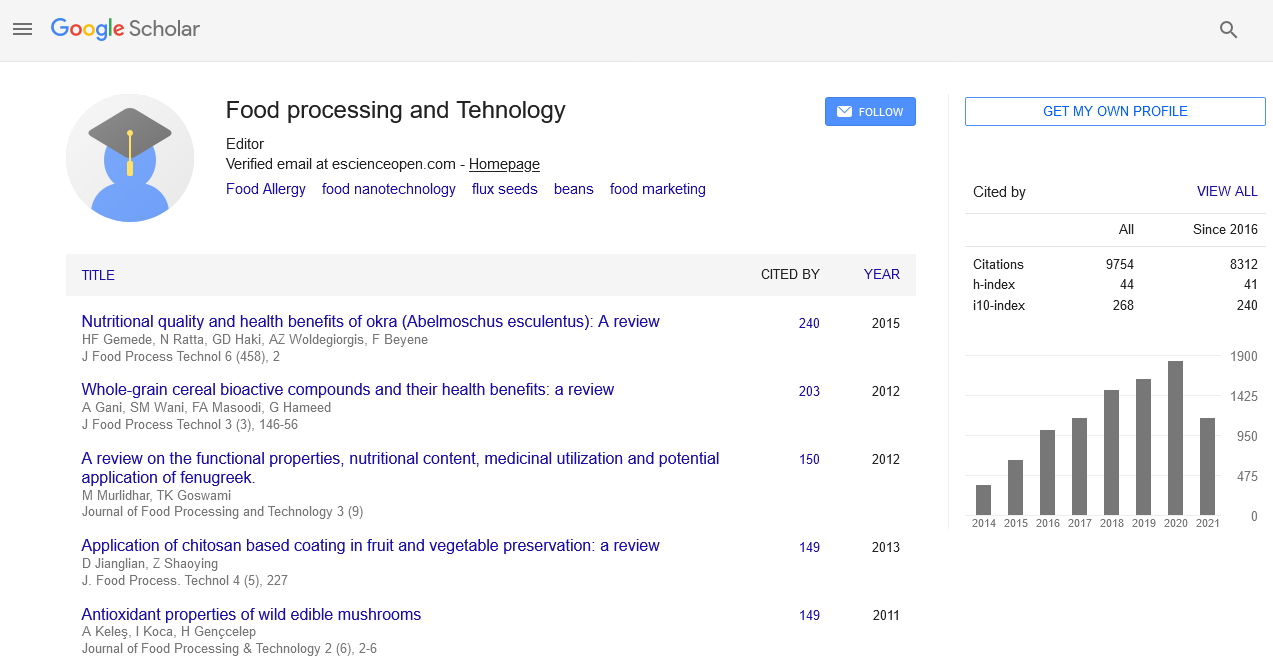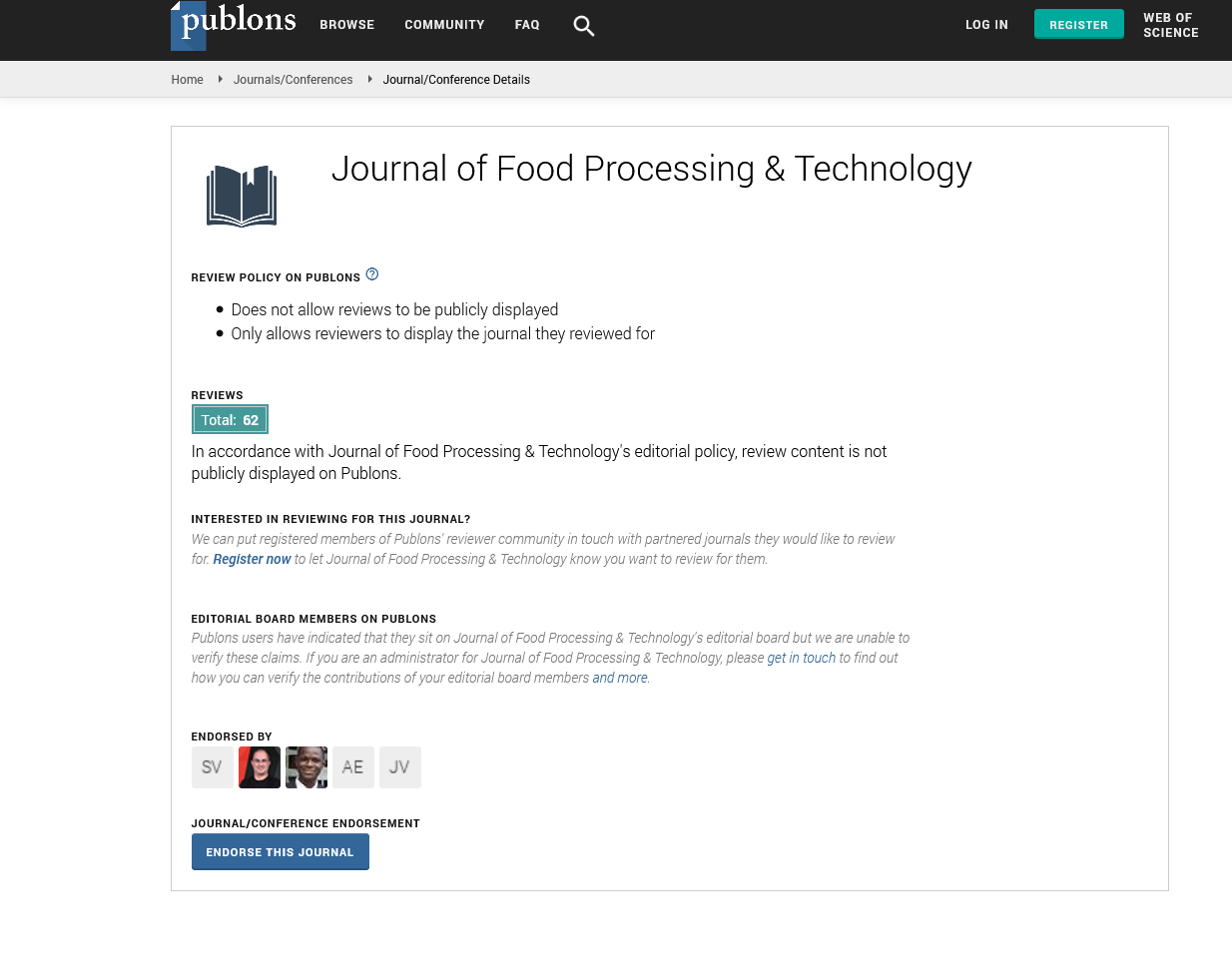Indexed In
- Genamics JournalSeek
- Academic Keys
- JournalTOCs
- China National Knowledge Infrastructure (CNKI)
- Access to Global Online Research in Agriculture (AGORA)
- Centre for Agriculture and Biosciences International (CABI)
- RefSeek
- Directory of Research Journal Indexing (DRJI)
- Hamdard University
- EBSCO A-Z
- OCLC- WorldCat
- Scholarsteer
- SWB online catalog
- Publons
- Euro Pub
- Google Scholar
Useful Links
Share This Page
Journal Flyer

Open Access Journals
- Agri and Aquaculture
- Biochemistry
- Bioinformatics & Systems Biology
- Business & Management
- Chemistry
- Clinical Sciences
- Engineering
- Food & Nutrition
- General Science
- Genetics & Molecular Biology
- Immunology & Microbiology
- Medical Sciences
- Neuroscience & Psychology
- Nursing & Health Care
- Pharmaceutical Sciences
Opinion Article - (2024) Volume 15, Issue 2
Innovative Urban Farming: Building Sustainable Systems with Food Technology
Farag Bergen*Received: 29-Mar-2024, Manuscript No. JFPT-24-25773; Editor assigned: 01-Apr-2024, Pre QC No. JFPT-24-25773 (PQ); Reviewed: 15-Apr-2024, QC No. JFPT-24-25773; Revised: 22-Apr-2024, Manuscript No. JFPT-24-25773 (R); Published: 29-Apr-2024, DOI: 10.35248/2157-7110.24.15.1100
Description
In a historical marked by rapid urbanization and environmental challenges, the need to enhance domestic food supply while promoting sustainability has become increasingly urgent. Traditional agriculture faces numerous constraints, from limited land availability to water scarcity and climate change-induced disruptions. In response, technology-driven urban farming systems offer a promising solution, revolutionizing the way we grow and distribute food within cities. Urban farming refers to the practice of cultivating, processing, and distributing food in or around urban areas. It encompasses a diverse range of techniques, from ridge gardens and hydroponics to vertical farming and aquaponics. These methods leverage technological innovations to maximize efficiency, minimize resource consumption, and reduce environmental impact. At the heart of technology-driven urban farming systems lies innovation in agricultural practices and infrastructure. Vertical farming, for instance, involves growing crops in vertically stacked layers, often within controlled indoor environments. By utilizing hydroponic or aeroponic systems, which deliver nutrients directly to plant roots in a soil-less medium, vertical farms can achieve higher yields while conserving water and minimizing pesticide use. Furthermore, advancements in LED lighting technology have enabled vertical farms to optimize light spectra and intensity, tailored to specific crop requirements. This not only enhances growth rates and nutritional content but also reduces energy consumption compared to traditional lighting systems.
Similarly, aquaponics integrates fish farming with hydroponic plant cultivation in a symbiotic ecosystem. Fish waste provides nutrients for plants, while plants filter and purify the water, creating a closed-loop system that minimizes waste and maximizes resource utilization. Through monitoring and automation technologies, aquaponic systems can maintain optimal conditions for both fish and plants, ensuring efficient production year-round. Moreover, the advent of precision agriculture technologies, such as sensors, drones, and data analytics, has revolutionized farming practices. These tools enable real-time monitoring of environmental conditions, soil health, and crop growth, allowing farmers to make data-driven decisions to optimize yields and resource allocation. In urban farming, these technologies can be scaled down for use in confined spaces, providing valuable insights for maximizing productivity while conserving resources. However, the success of technology-driven urban farming systems relies not only on technological innovation but also on supportive policy frameworks and community engagement. Governments can play a crucial role by providing incentives for urban agriculture, such as tax breaks or subsidies for implementing sustainable practices and infrastructure. Zoning regulations may need to be revised to accommodate urban farming initiatives, allowing for the repurposing of underutilized urban spaces for agricultural purposes.
Furthermore, educational programs and community outreach efforts are essential for fostering public awareness and participation in urban farming. By involving local communities in the cultivation and distribution of food, urban farming not only enhances food security but also promotes social cohesion and environmental stewardship. Initiatives such as community gardens, farmers' markets, and urban agriculture cooperatives empower residents to take ownership of their food systems, fostering a sense of pride and resilience. In addition to addressing food security concerns, technology-driven urban farming systems offer numerous environmental benefits. By reducing the need for long-distance transportation and minimizing the use of chemical inputs, urban farming helps mitigate greenhouse gas emissions and alleviate pressure on natural ecosystems. Moreover, green roofs and living walls, often integrated into urban farming projects, contribute to urban biodiversity, improve air quality, and mitigate the urban heat island effect. The scalability and replicability of technologydriven urban farming systems will be critical for their widespread adoption and impact. Collaboration between government agencies, research institutions, private sector stakeholders, and civil society organizations is essential for developing integrated solutions that address the complex challenges of urban food security and sustainability. By harnessing the power of technology, innovation, and community engagement, we can cultivate a more resilient, equitable, and sustainable food system.
Citation: Bergen F (2024) Innovative Urban Farming: Building Sustainable Systems with Technology. J Food Process Technol. 15:1100.
Copyright: © 2024 Bergen F. This is an open access article distributed under the terms of the Creative Commons Attribution License, which permits unrestricted use, distribution, and reproduction in any medium, provided the original author and source are credited.


